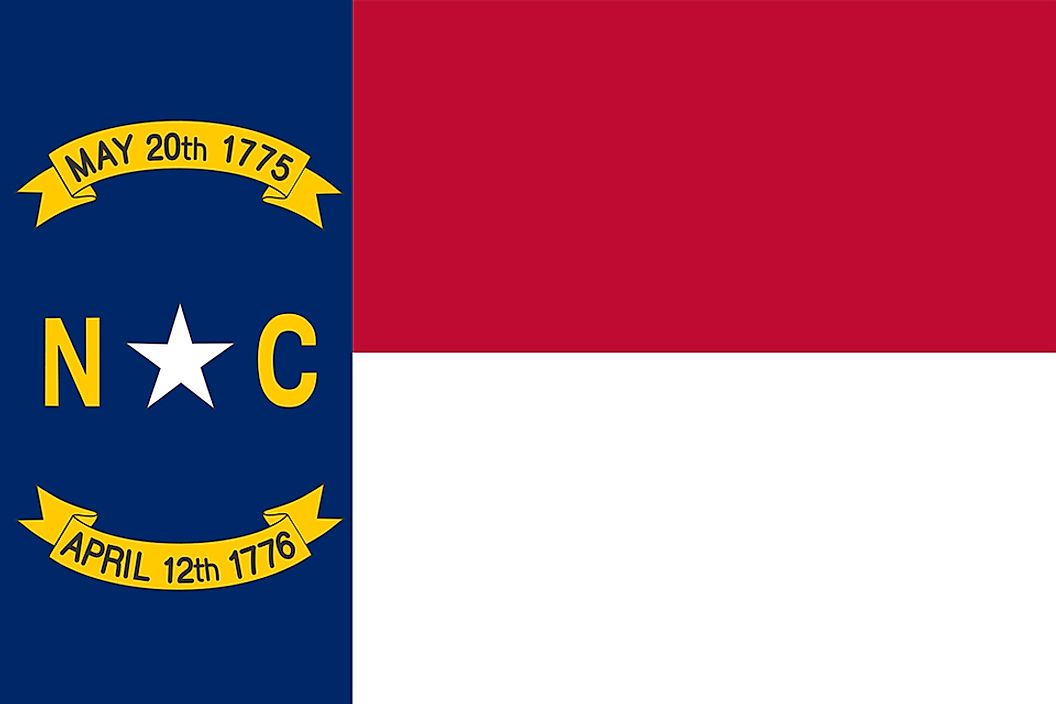North Carolina State Flag

The flag of North Carolina State features a blue union with a white star at the center. The flag has the letters “N” and “C” on the left and right sides of the star, respectively. The are two semi-circular gold scrolls located at the center of the union, above and below the star. The top scroll has “May 20th 1775” written in black letters, and the scroll below the star has “April 12th, 1776” written in black letters. The first date refers to the Mecklenburg Declaration of Independence, while the second represents the Halifax Resolves. The Halifax Resolves is a document which put North California in a front position of the American independence movement, and is among the significant milestones in the records of the history of North Carolina. These two dates also have been used in the North Carolina Great Seal. The flag’s fly includes two bars which are equal in length and width. The top bar is red, while the bottom bar is white. The bar’s horizontal length is the same as the vertical length of the union. The entire length of the flag is one-third greater than its width.
The Flag’s History
In March 1885, Johnston Jones, who was then the state’s Adjutant General and also a former Confederate soldier, presented a bill to the state parliament which led to the adoption of the flag. The adoption of the flag led to the replacement of the flag that was used since June 22, 1861, immediately after the state's declaration to withdrawal from the Union on May 20, 1861. The old flag’s red field was replaced with a blue field. The North Carolina state flag is considered to be the first state flag, and not a Confederate Flag. Furthermore, the flag is considered to be the first and only formal flag which represents the state of North Carolina. When the American Civil War began, the secessionist leader talked about the declaration of Mecklenburg, and tried to relate it with North Carolina becoming part of the Confederacy. On September 1864, Jefferson Davis, who was a Confederate leader, spoke to a Charlotte gathering and said that the first people to disobey the British authority were the people of this section, and they also went ahead to pronounce themselves free. Davis also encouraged the gathering to continue supporting the effort of the civil war made by the Confederacy. For over 100 years, no changes were made to the flag until in 1991, when the legislature implemented some minor alterations such as removing two commas from both dates and altering the entire flag length to one-half greater than the width.
The Flag’s Salute
In 2007, the joint legislature of North Carolina embraced a formal salute of the flag. The flag's salute to North Carolina is a pledge of faith, loyalty, and love to the Old North State.











